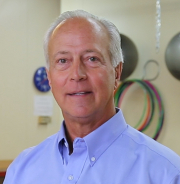There are two things you can expect at the Open Championship - variable weather and a physical challenge to golfers that they may not be aware of. All PGA golfers on tour are prepared week to week for the challenges of travel, hotel beds and food choices. Working personally with Jim Furyk, Phil Mickelson, Davis Love and Matt Kuchar over past Open Championships the physical challenge the tournament presents was noticeable. Physical assessments on the PGA players throughout the season reveals findings consistent with injury, overuse, and swing changes. All are the result of the physical demands golf places on the body.
At the Open there is a noticeable increase in tightening and stiffness in the golfer's hips and lower back. It is well established that the hips and lower back are crucial to an efficient and consistent golf swing. At any of the four golf majors the player wants to be at their best. Disrupting hip and lower back mechanics will definitely subvert their effort.
Assessments reveal that within the first two days of practice rounds 20-30% of hip internal and external rotation is lost or compromised. Compromised meaning hip range of motion is normal but the golfer notices stiffness and soreness at the end range of motion. Both findings are not present the week before or the two weeks after the Open Championship. If the golfer is under care of their chiropractor or physical therapist this should not be an issue. Without support staff the golfer may well find their preparation efforts undermined by the physical challenges and their performance suffering.
Weather can certainly be a contributing factor challenging performance. I have had the opportunity to work three Open Championships where the weather was beautiful relative to the other six where weather was not so good. Interestingly even when the weather was good the findings of hip and lower back restriction were present. Personally walking many of the practice rounds with the golfers I have noticed hip and lower back tightness myself that demanded my attention. The ground just seemed harder to walk on than courses in the U.S..
Taking the opportunity to speak with the golf staff at all of the Opens I was given a course in links golf. I was told that being located on the coastline links courses have a sandy soil. The winds and sun dry the soil and with less moisture it becomes firmer. Additionally this soil supports unique grasses that create a firm turf. In some locations the layer beneath the soil is clay based which increases the firmness of the ground. It was described to me as walking on a paved surface versus the plushness of a soccer field.
To diminish the compressive forces of each step the body compensates by tightening and stiffening soft tissue structures to protect joints from injury. This compensation occurs over five to six days walking approximately five miles per round each day.
I take this into consideration when preparing the golfers I work on prior to and monitoring them during the Open Championship. It is the responsibility of the sports medicine specialist to be aware of the golfer's physical demands and to minimize the negative effects of tightness and the diminished mobility of the hips. Maintaining body function at the Open will only enhance the outcomes of training and the objective of peak performance. Since the Open is one of the most challenging events on the golfer's schedule it is one less thing for the golfer to contend with in their pursuit of success.

